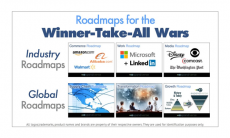Nowadays, endless meetings between companies in need of help and advice and consulting take place. The one side has challenges to face, problems to solve, aggressive goals to catch, and great results to deliver quarterly, the other side has great people, solutions, products, processes, expertise, and models to apply in order to help the other side to deliver what it has promised to shareholders.
At the same time, on the one side, there are different agendas to be served and addressed, silos to be overtaken, territories of authority to be redefined, stress to catch up with competition, agony to do something different, and all the while on the other side there are sales goals, charge, market share, and analysts auditions.
The result is having some really smart people in meeting rooms or behind screens during a call, around the world talking completely different languages and having different stories and concepts to sell or to implement, when on principal they both look for the same things; a problem to solve, a challenge to address, and to deliver something exceptional to drive the organization forward and make it even more competitive in a fast-paced market.
In addition, both sides are so eager–one to see results, and the other to close the deal and deliver value– that both occasionally miss the point. They shift the whole thing (from sales and results driven on one side and goals to be achieved and people placement on the other) to something magical so that they put customers in the very center of everything, to apply all the expertise both sides have to define the problem.
People say that a well-defined problem is half-solved one. I will add that the ability to listen and be perceptive to what the actual needs and agonies are is the most critical element across the journey of the digital transformation.
We need to stop dictating solutions and start working towards an in-depth collaboration scheme able to lead us to solve problems. Digital is all about transforming the way things happen, not only how we design products, but the way parties, companies, and people interact: buy, sell, rate, evaluate services, tangible or not. Digital is all about solving old problems and cases using new ways of thinking and approaches.
The biggest challenge we have is to re-establish the connection between what each company has to offer and the audience they want to address and interact with–not through the sales perspective but the experience.
We need digital to redesign and redefine the way this conversation among the involved parties takes place. We need to understand that the whole product is a new form of a well-established choreography where roles can be exchanged and steps can be taught to both partners.
Moreover, based on data we gather and we have access to, we can start to shift the conversation from something based on data outcomes to something more semantics driven.
Digital is here to transform the way we perform, act, and interact. But at the same time, it’s here to help us solve problems that we couldn’t approach before because of our strange model. Design allows and teaches us to explore every possible scenario behind each decision, each stage, and each formation. Design allows us to map the transition from a legacy infrastructure based on old beliefs and ways to do the job to a new one focused on solving problems and delivering great value to all involved parties.
Nowadays, we have to understand that the answers like “yes, I can do this” are not the way to do things or address needs, but “yes, I will understand how to do things in a better-choreographed way” is.







